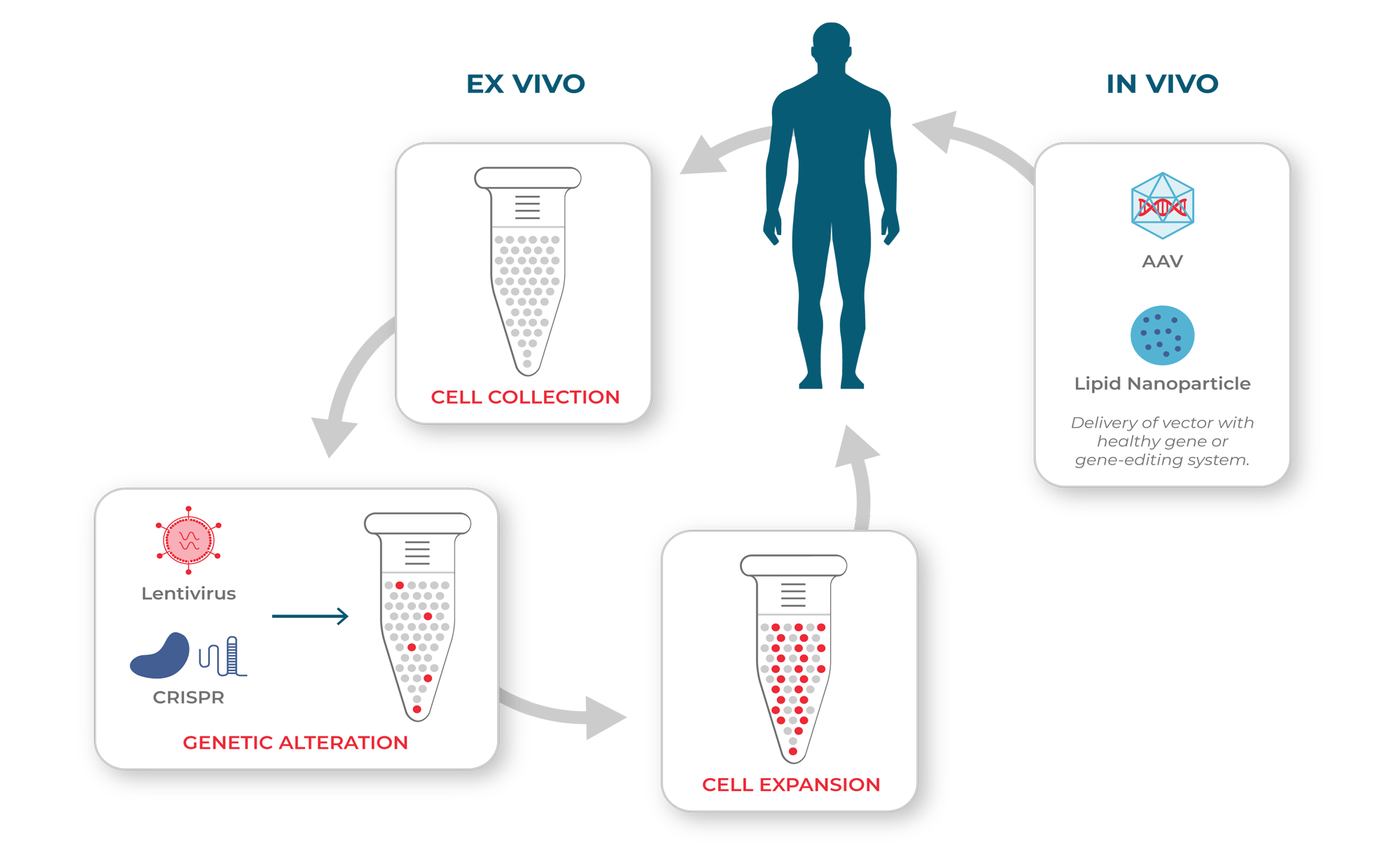Why Single Cell for Cell and Gene Therapies?
The development of next-generation cell and gene therapies
holds enormous promise for providing curative solutions to a host of genetic diseases.
Yet, these therapies are inherently complex and difficult to characterize.
The key to the continued success of gene and cell therapy development is deepening our understanding of the variation that exists in therapeutic agents and their effects early in discovery.
With Tapestri, you can simultaneously measure multiple genotypic and phenotypic parameters in the same cells, achieving a more comprehensive characterization of your ex vivo cell therapeutics. With rich analyses serving as a foundation, you can more robustly identify critical quality attributes and accelerate your path to commercialization.
For in vivo gene therapies, Tapestri offers comprehensive single-cell analyses of your model systems, providing valuable insights about the delivery, efficacy, and safety of your therapeutic.

Ex vivo and in vivo gene and cell therapy developmentEx vivo cell therapies (left) involve collecting cells from the patient or a donor. The cells may then be genetically modified before they are expanded and infused into the patient. In vivo gene therapies (right) are administered directly to the patient using a vector, such as adeno-associated virus (AAV) or lipid nanoparticles.






















